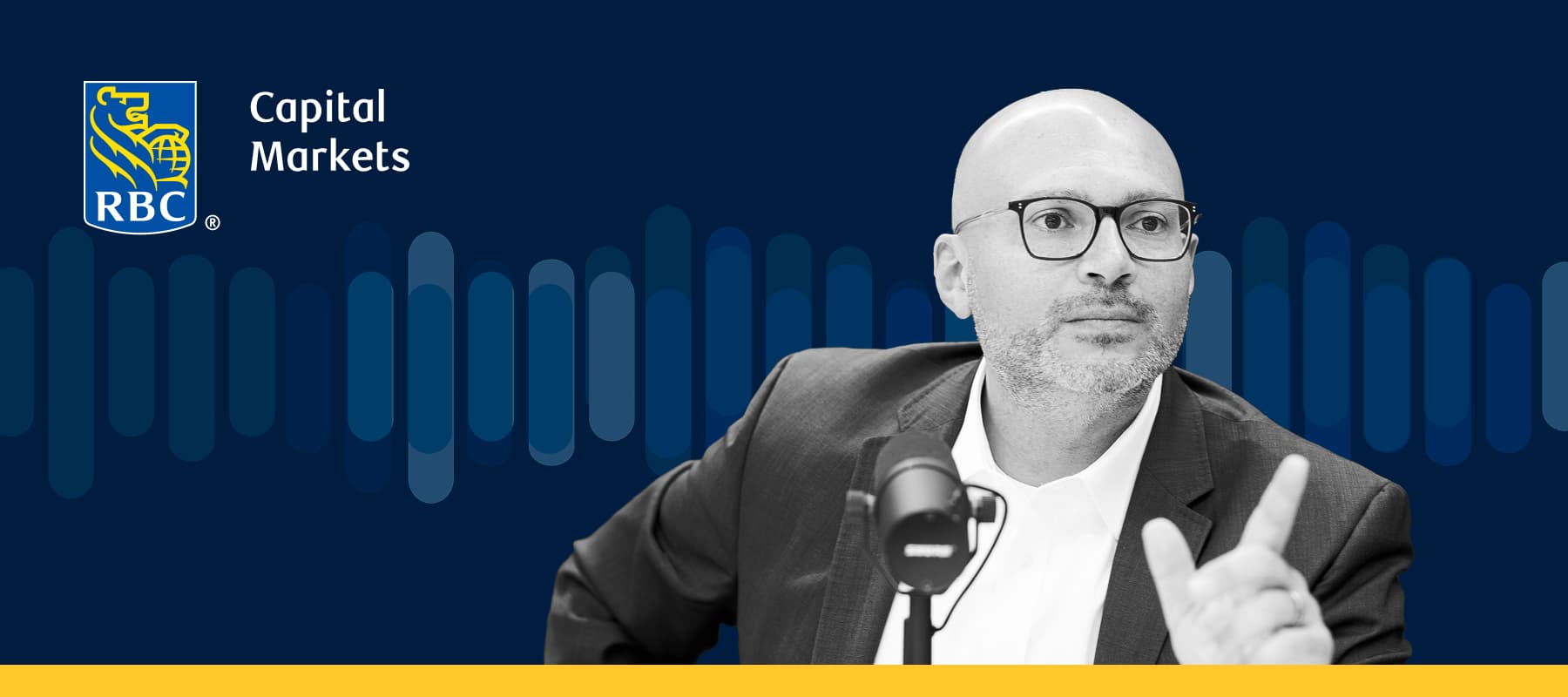
Innovation and growth: key ingredients for healthcare M&A
Despite a challenging macroeconomic context affecting transactions during the start of 2023, the US healthcare sector is preparing for an upcoming wave of M&A activity. RBC’s expert bankers discuss what’s next for the healthcare sector on Strategic Alternatives, the RBC M&A podcast. Listen to the episode here, or explore the takeaways below.
KEY POINTS
- Despite a significantly subdued start to 2023, M&A volumes in the US healthcare sector are beginning to stabilize and companies are preparing for a wave of M&A in Q3 and Q4.
- Tough financing markets and access to capital are impacting the decisions of smaller-mid cap companies – who are examining strategic alternatives including acquisition deals to boost value.
- Compressed valuations and heightened boardroom CEO confidence across various healthcare subsectors are encouraging increased transaction levels.
- The need to accelerate top-line growth and drive scale remain key drivers of M&A across various healthcare sectors.
M&A volumes expected to rise in H2 2023
While analysts anticipated a slow first half of 2023, H2 is set to experience a fresh wave of M&A, explains Vito Sperduto, Co-Head, Global M&A in conversation with RBC’s expert banking panel featuring Andrew ‘Cal’ Callaway, Global Head of Healthcare Investment Banking, Ahmed Attia, Managing Director of Healthcare M&A, and David Levin, Co-Head of US M&A.
“We’re about to have M&A volume not seen since Q2 of 2020, which was obviously during the pandemic shutdown. And we’ve just come off of 2021, which was the best year in history by all measures,” says Sperduto.
Large cap companies have all the capital they need to pursue select acquisitions and are beginning to consider which targets to chase over the next six to 12 months. This comes at a time when previous rounds of consolidation have reduced the number of available and actionable quality businesses to choose from, so competition in the US healthcare sector is set to intensify.
“The reality is that the deal chessboard is active,” says Attia. “The larger players recognize that their competitors are going to zone in on the same assets. In the pharma services sector, we probably had double the number of public companies in the sector four or five years ago,” he adds.
“The reality is that the deal chessboard is active. The larger players recognize that their competitors are going to zone in on the same assets. In the pharma services sector, we probably had double the number of public companies in the sector four or five years ago.” Ahmed Attia, Managing Director, Healthcare M&A, RBC Capital Markets
Tough financing markets force strategic alternatives
While large cap companies have a wide array of choice, it’s a different story for smaller cap companies, with many lacking sufficient capital to pursue convential funding routes. These firms are setting their sights on strategic alternatives, explains our panel.
“We’re seeing small cap companies thinking long and hard about strategic alternatives; the perfect storm for what looks like a very active second half of the year from an M&A standpoint,” says Callaway.
“We’re seeing small cap companies thinking long and hard about strategic alternatives; the perfect storm for what looks like a very active second half of the year from an M&A standpoint.” Andrew ‘Cal’ Callaway, Global Head of Healthcare Investment Banking, RBC Capital Markets.
The financing markets can be tough for smaller cap companies. This increases the appeal of unlocking extra value through M&A. “ It was easy before to do everything on your own – as financing was more available,” explains Levin. “Now, because financing is so much harder to get, there’s a shift in the boardroom where people are perhaps more realistic about taking an opportunity to capture some real value through an M&A deal,” he adds.
Healthcare: disruption, innovation, and valuations
The life sciences space has seen robust valuations over the last few years. This has made it harder for large cap buyers to pay the required premiums, equating to around 60-100% on every trade. This meant that previous deals relied on individual buyers taking a differentiated view. But with valuations falling, processing is becoming more competitive.
Within large cap firms, CEO confidence is high and there is a strong appetite for deals. Compressed valuations following the preceeding period of record prices are adding to a buoyant M&A outlook in H2. “Large caps are going to be losing about $200 billion worth of revenue on their products in the back half of the decade and that’s giving them real urgency to try and do transactions right now,” says Levin.
“Large caps are going to be losing about $200 billion worth of revenue on their products in the back half of the decade and that’s giving them real urgency to try and do transactions right now.” David Levin, Co-Head, US M&A, RBC Capital Markets
Growth and scale remain the priority
This growing appetite for for M&A is being fueled by a need for businesses to accelerate top-line growth, while also scaling their operations. “Growth is still a key driver for large-cap players. And fundamentally, the market has been rewarding businesses that are excelling in that regard,” says Attia.
“There has also been a heightened focus by larger players in the space to really build scale. M&As between strong businesses that give very differentiated capabilities are a dynamic that continues to drive a lot of focus in pharma services,” he concludes.
Recent years have seen significant investment from financial sponsors. And, with small caps seeking strategic alternatives and large caps targeting continued growth and scale, our expert bankers remain bullish that M&A activity will continue being highly active in the pharma services space.